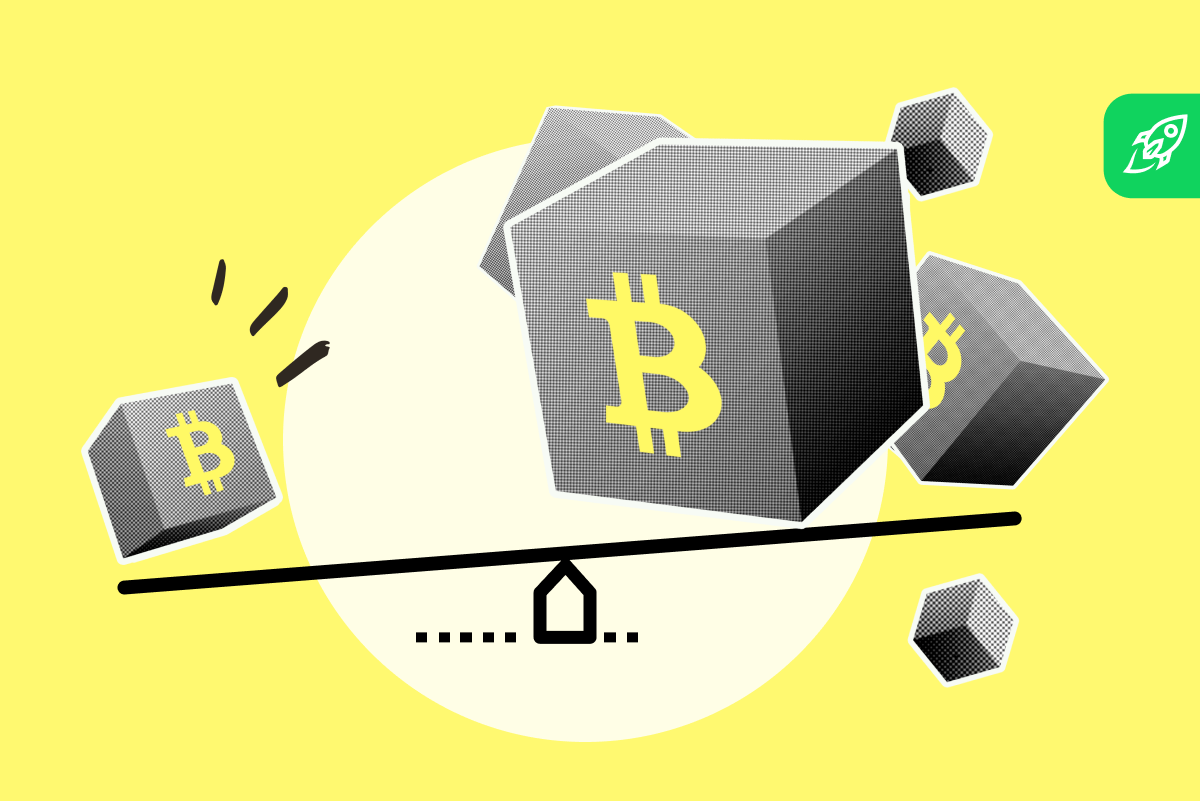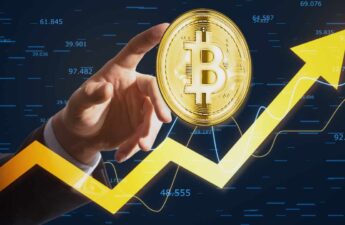Margin trading has always been an advanced trading activity that allowed experienced traders to get more out of their money. It involves users borrowing funds from an exchange or other traders to make potentially bigger profits… or losses.
If you’re new to the world of crypto trading, then we recommend you to either study the essentials (if you are a complete beginner) or brush up on some general trading terms first.
How Does Margin Trading Work?
Margin trading refers to a type of trading that allows users to trade assets using funds provided by an exchange or other traders.
All kinds of trading are extremely risky, and crypto trading is even more so. Crypto margin trading, in turn, is at least ten times as risky as regular crypto trading — after all, when a user chooses to trade on margin, they are using a position larger than their actual balance. While it gives you increased buying power and consequently higher potential profits, please remember that the risks of crypto margin trading are immense. This type of trading is not recommended for novice traders as it requires advanced trading skills.
Margin & Leverage
“Margin” means “borrowing money.” It usually refers to two things in trading. Firstly, it’s the amount the trader borrows on top of their initial investment, the size of their margin loan. Secondly, it can also mean the trader’s own funds.
As mentioned above, margin trading is likewise referred to as trading with leverage. The leverage is determined by the following ration: leverage = (borrowed funds + margin) / margin. The “x” symbol usually represents the leverage (2x, 5x, 20x, …) or a ratio of 2:1, 5:1, 20:1.
Example: Bob has $10,000 of his own capital but wants to place an order of $100,000. He decides to place a margin order using leverage of 1:10. Bob borrows $90,000 from a third party to open a leveraged position of $100,000.
Initial Margin Maintenance Requirements
Initial margin is the amount of money that a trader must deposit to their account to open a margin position.
Maintenance margin is the minimum amount of funds a trader has to maintain in their margin account to continue holding their position. Although there are some general guidelines, it usually varies from platform to platform. When the equity (the value) of the user’s margin account falls below the maintenance margin, the trader will receive a margin call.
Margin Call and Liquidation Price
A margin call is a demand from the exchange for you to either add money to your account or to close your position. It occurs when the value of a trader’s account falls below a pre-specified level.
Exchanges monitor the value of digital assets on a margin account to ensure it doesn’t fall below a certain level. If prices rise, the position can be kept open for as long as there is no risk of losing one’s own and borrowed funds.
If the price falls, the exchange will prevent loss by liquidating the position. A trader can prevent this by selling a certain amount of assets or by depositing additional funds in a margin account.
When starting margin trading, there is a liquidation price set automatically. Once the liquidation price is reached, the trader’s position is forcibly closed (liquidated). This is a necessary precaution to decrease trading risks.
Isolated Margin
Isolated margin aims to manage risk while trading on margin. Isolated margin helps a trader by restricting the amount of margin set for each position. Suppose a trader’s position is liquidated when they trade in an isolated margin mode. In that case, an isolated margin balance will be liquidated, while the rest of the funds will not be affected.
To help novice traders start margin trading, Changelly PRO provides an isolated margin mode, so that users could be in charge of the risk.
Cross Margin
Trading in cross margin mode means an entire margin balance is shared among the trader’s positions to prevent liquidation.
Stop-loss Trading Order
Stop-loss is a type of order that limits trading losses as soon as the price reaches a specified (pre-defined) price level. Stop-loss is considered one of the main tools for effective trading.
From a technical point of view, this is simply a pending order that is automatically activated at a given rate value. Stop-loss allows you to get rid of the constant monitoring of the position.
Difference between Spot and Margin Trading
Spot trading and margin trading refer to different concepts: spot trades are the opposite of futures contracts and refer to contracts that are settled (paid and delivered) immediately on a spot date. Spot trading requires you to own all the funds that you trade with.
Example: Alice wants to exchange 1,000 USDT for BTC. She deposits her funds on a crypto margin exchange to trade it for Bitcoin.
When trading on margin, traders use both the money they own and the funds they borrowed from an exchange or another trader.
Example: Bob researched the market and knew he could get profit. However, all he has is 1 BTC. He decides to start margin trading on Changelly PRO and places 1 BTC applying the 1:10 leverage. Now, he has 10 BTC to trade.
Margin Trading Risks
As we have mentioned previously, when trading on margin, there is always a specified price level at which your position will either be liquidated or you will be required to add more funds to your account. Because margin trading involves you borrowing money from an exchange (or a third party), the exchange will sell (liquidate) your position if there is a danger of loss to them. When you trade with your own funds only, you will lose your entire initial investment only when the price falls to 0. However, with margin, the price only needs to fall by a fraction in order for you to lose your entire investment.
Here’s an example: say you have $10k, and that’s what 1 BTC costs at the moment, so you buy it. You will only lose your funds if BTC goes down to 0, which is highly unlikely. Your friend also has $10k, but he is an experienced trader. Having researched the market, he has come to the conclusion that the BTC price is going to rise in a week. So he buys BTC on a 10x margin, which brings his total funds up to $100k and allows him to buy 10 BTC.
Now, imagine the price falls to $9k the next week. You sell your Bitcoin and lose one thousand dollars. Your friend, however, has bought 10 BTC — when selling them, he loses one thousand times ten, so the $10k he initially invested. In fact, he won’t even be the one selling those Bitcoins, as if the price goes any lower, his initial investment won’t be able to cover the loss. The exchange can’t allow that, so it will forcibly liquidate his position or will ask him to invest more, which can lead to more losses in the future.
Additionally, there’s also an extra risk to crypto margin trading. Cryptocurrency prices are highly volatile, and they can fall below the specified liquidation price before the exchange gets to liquidate your position. In that case, traders will have to pay extra to cover the loss.See also
How to Minimize Risks When Trading On Margin
Most people don’t have fleshed out risk management strategies when they open their first margin position — you develop it as you gain more experience and learn more about the market, your own trading quirks, and habits. However, there are some general risk management tips that can help you to minimize your losses and maximize your profits when you’re just starting to margin trade crypto.
This general investment rule works for cryptocurrency margin trading, too. Try opening a leveraged position with a deposit equal to as little as $10 first to make sure you’ve actually understood what it’s all about and build up your confidence.
Don’t be overconfident.
No matter how high your risk tolerance is, we would advise against being overconfident and investing more than you can afford to lose. Always approach crypto margin trading with a cool head and avoid entering unnecessarily risky trades if you can.
Borrow only for the short term.
Margin borrowing is no different from any other type of loan, and there are penalties for holding margin loans for too long. You may have to pay interest, and those interest payments may rack up quite easily especially if you don’t keep track of them.
Make sure to study your margin agreement and the terms of use of the platform you’re operating to trade on margin. This way you won’t run into any nasty surprises when it comes to resolving any issues with that service.
How to Choose an Exchange
There are several key factors that should be taken into account when looking for a crypto margin trading exchange.
🔝 Available leverage. Check whether the leverage the exchange offers is right for you. Keep in mind that leverage might be different for each traded cryptocurrency.
❗Fees. Learn more about the platform’s trading fees. How much will it cost to withdraw funds? Are there any additional or hidden fees?
🔝 Liquidity. You can check the liquidity of various crypto margin trading exchanges on websites like CoinMarketCap. The higher the liquidity, the more efficient and fluid your trades on that platform will be.
❗Security and reputation. The security of your funds must be the priority of every exchange. Crypto margin trading is already extremely risky, so your trading platform of choice has to have all the basics covered — high-level security, a robust connection, a wide range of trading instruments and tools, and so on.
There are quite a few reliable crypto exchanges out there that let their users trade on margin. Exchanges like Binance or BitMex are perfect for expert margin traders, while our full-featured trading platform Changelly PRO is better suited for beginners. That said, however, all of these crypto margin trading platforms are great for all kinds of investors, and we recommend trying them all out first to see which one suits you best.
Bottom Line
Unlike standard trading, where any unexpected price movement can most often be simply waited out, in cryptocurrency margin trading a long-term drawdown can lead to losing one’s deposit. You should not approach full-scale crypto margin trading unless you are confident in your risk management strategies and your abilities to resist FOMO and to enter and exit cryptocurrency trades at appropriate times.
If you set yourself the goal of becoming a margin trader, then we recommend studying technical analysis and learning how to read charts. While that won’t fully alleviate the risks you face when margin trading crypto, it’ll help to manage your funds in a more efficient way.
Be mentally prepared for potential losses in advance. Only with this approach will it be possible to derive stable benefits from crypto margin trading.
Disclaimer: Please note that the contents of this article are not financial or investing advice. The information provided in this article is the author’s opinion only and should not be considered as offering trading or investing recommendations. We do not make any warranties about the completeness, reliability and accuracy of this information. The cryptocurrency market suffers from high volatility and occasional arbitrary movements. Any investor, trader, or regular crypto users should research multiple viewpoints and be familiar with all local regulations before committing to an investment.



